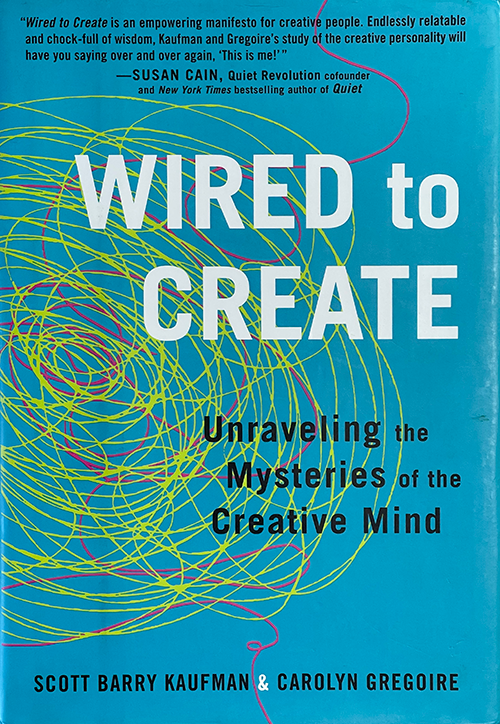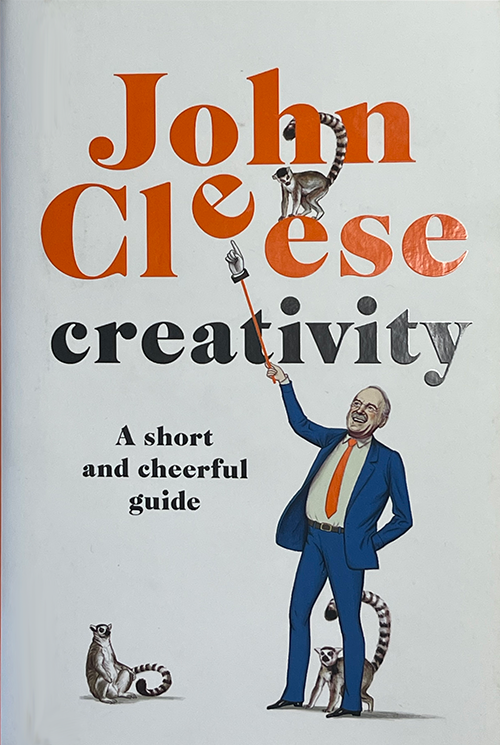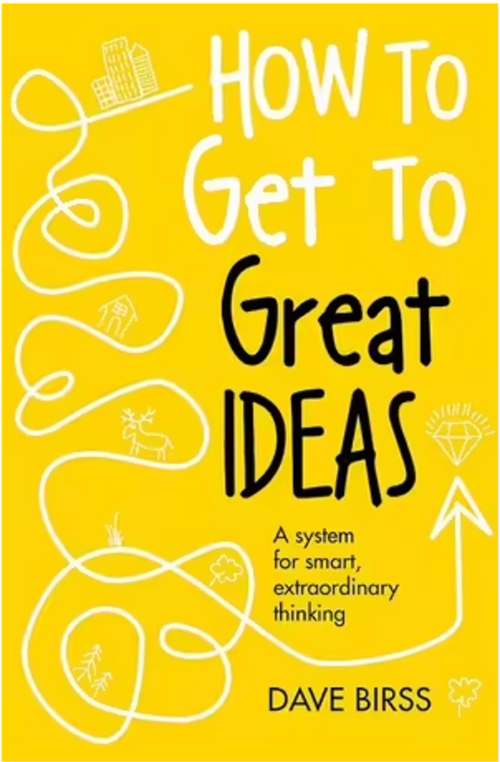Things You Can Do to Boost Your Creativity
Much has been written about the things creative types have in common. As mentioned, I don’t like the distinction between ‘creatives’ and others. We are all creative.
Kaufman and Gregoire in their book ‘Wired to Create’ (2015) recognize that the creative mind is ‘messy’ as it often considers paradoxes. They have studied the lives of famous artists, musicians, philosophers, innovators and creatives. They list habits or practices of what they call highly creative people. While Kaufman is one of the world’s most recognized researchers in the area of creativity, to ensure the broadest possible applicability of this program the work of many others has been taken into account.
Reported here are the results of my own meta-studies. Where I have found corroboration I have included the characteristics.
The characteristics are not intended to be a recipe for creativity. It is not suggested that to be creative one must adopt all of them. Not all highly creative people exhibit all of the characteristics. It is possible to increase our own creativity by practicing only some of the characteristics.
1
Variety is the Spice of Creativity
In the late 90s and early 2000s Apple used the strap-line “Think Different.”
One of the best things you can do to stimulate your creativity is to change the way you normally do things. Think different. Even small changes will have a profound effect. It might be as simple as taking a different route when walking home, or walking the dog.
Look for the things you do often. Can you change the way you do them? Seeing the same things differently can deliver new experiences and the research says that new experiences trigger neuroplasticity.
As well they trigger the release of the positive neurotransmitters, dopamine and norepinephrine. Neurotransmitters help brain cells communicate. Dopamine makes you feel good and norepinephrine helps with feeling alert.

2
Persistence
Creative people frequently put themselves ‘out there’. They believe in their own work and are confident. The know that rejection of their ideas or products is part of the process. They are motivated internally rather than by the reactions of others. It’s the old 1 percent inspiration and 99 percent perspiration concept.
3
Messy Mind
Creativity can be the blending of disparate elements in novel ways. So creative people have are happy to consider contradictory ideas or points of view at the same time and see the benefits and short comings of both. They are OK with mental disarray, disorder, ambiguity and chaos. As these messy minds are necessary for the blending of the previously unconnected.
Creatives are used to paradoxes and ambiguity. So it’s not surprising that they appreciate the weird and different.
4
Daydreaming
In their book Kaufman and Gregoire talk about the importance of ‘imaginative play’. Other researchers report that having the time to relax and let your mind wander encourages creativity. Rest and relaxation reduce noise in the unconscious mind allowing ideas to flow and enter the conscious. In other words you are letting your mind free to do its own thing and make new connections.
The highly creative person values solitude for this reason. However, they appreciate company and an audience for their ideas. again what appears to be a paradox is often found where creativity abounds. Meditation is another method used by some to stimulate creativity. All of these have the common characteristic of reducing noise, or distractions so the unconscious mind can allow ideas to happen and transfer to the conscious mind

5
Sleep on it.
In his book, ‘Creativity, A short and Cheerful Guide,’ John Cleese talks about how the unconscious mind keeps working even when the conscious mind stops. Even when we are sleeping. He stresses the importance of letting the unconscious mind do its thing. He also mentions the importance of being able to tolerate putting off a decision. The two reasons for this are that you may get new information and you may have new ideas.

6
Embrace Failure
Most Creative people are not afraid of failure. Many creatives look forward to failure and see it as a way of learning more about the challenge they are addressing or the project they are working on. Failure can be the result of taking risks, but great success can also be the outcome. Failure should not be seen as an error or a bad thing. The failure may well lead to something else that is wonderful. The important skill is to recognise which outcomes have intrinsic value and which are steps on the way to something better.
7
Explore Your Divergence
There are ways to develop your voluntary divergence. The ways in which you chose to be different. There are many ways in which you can do this. Here are some:
Contrariness. Question everything. Especially question the things you do automatically. Question ‘best practice’ maybe it can be better. Contradict yourself. Get up early or late have juice instead of coffee. Change it up. The different patterns may reveal different perspectives.
Dreaminess. Daydreaming is not a bad thing and certainly not a time-waster when it comes to creativity. This is how we activate the #Default Mode Network (DMN). When this is activated the brain makes associations between ideas and thoughts that are not usually connected. Hence new ideas can be achieved. Work out the activities/environments that make daydreaming easiest for you. It may be in the shower or talking a walk. Remember to write down any good ideas you come up with.
Altered states. Drugs can do this but a safer option is meditation. Open Monitoring Meditation is better than focused as it allows thoughts to arise and be recognised. (search ‘body scan meditation’) Exercise is another way to do this as it releases endorphins.
Play. Tinkering and purposeless play are ways to discover new uses for existing things and opportunities that your conscious mind wouldn’t achieve on its own. You will need to remove the usual constrains such as, your assumptions, internal politics, environment. You will need to let go of serious thoughts.

8
Curiosity
Creative people tend to be interested in many and diverse things. They are fascinated by the world around them, the people in it and the range of ideas and objects. The often are interested in science and technology while at the same time appreciate the arts and often practice more than one of them. They are sometimes autodidactic polymaths (how about that handle!). That is they prefer to teach themselves rather than undertake formal study and follow what they find interesting.


